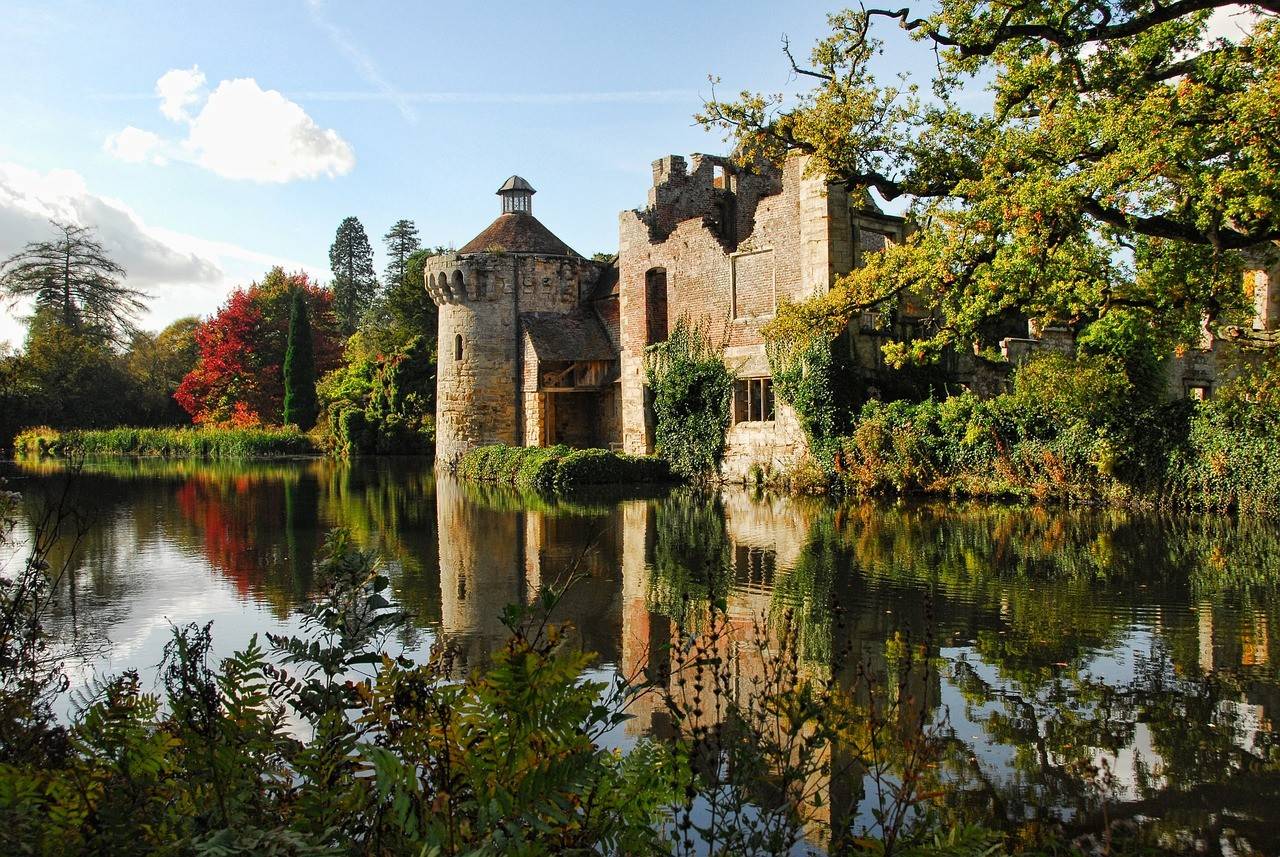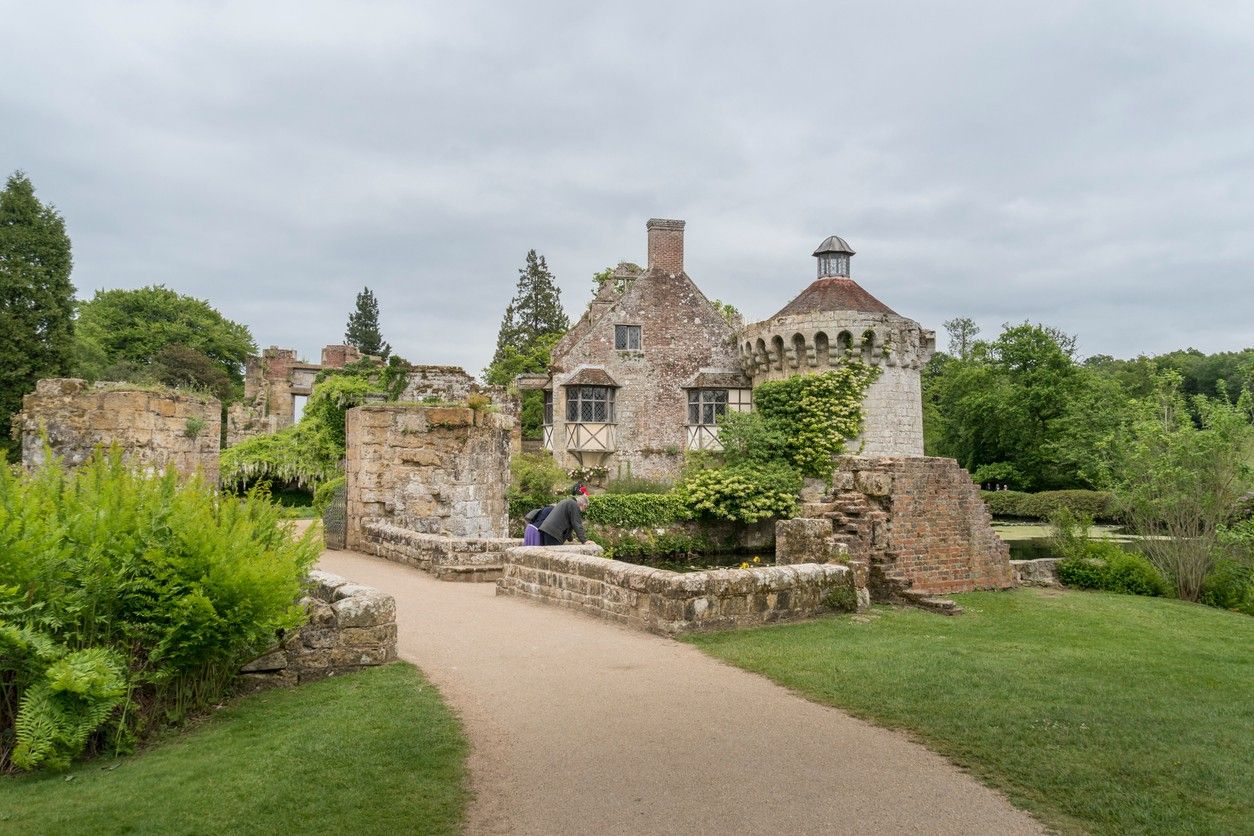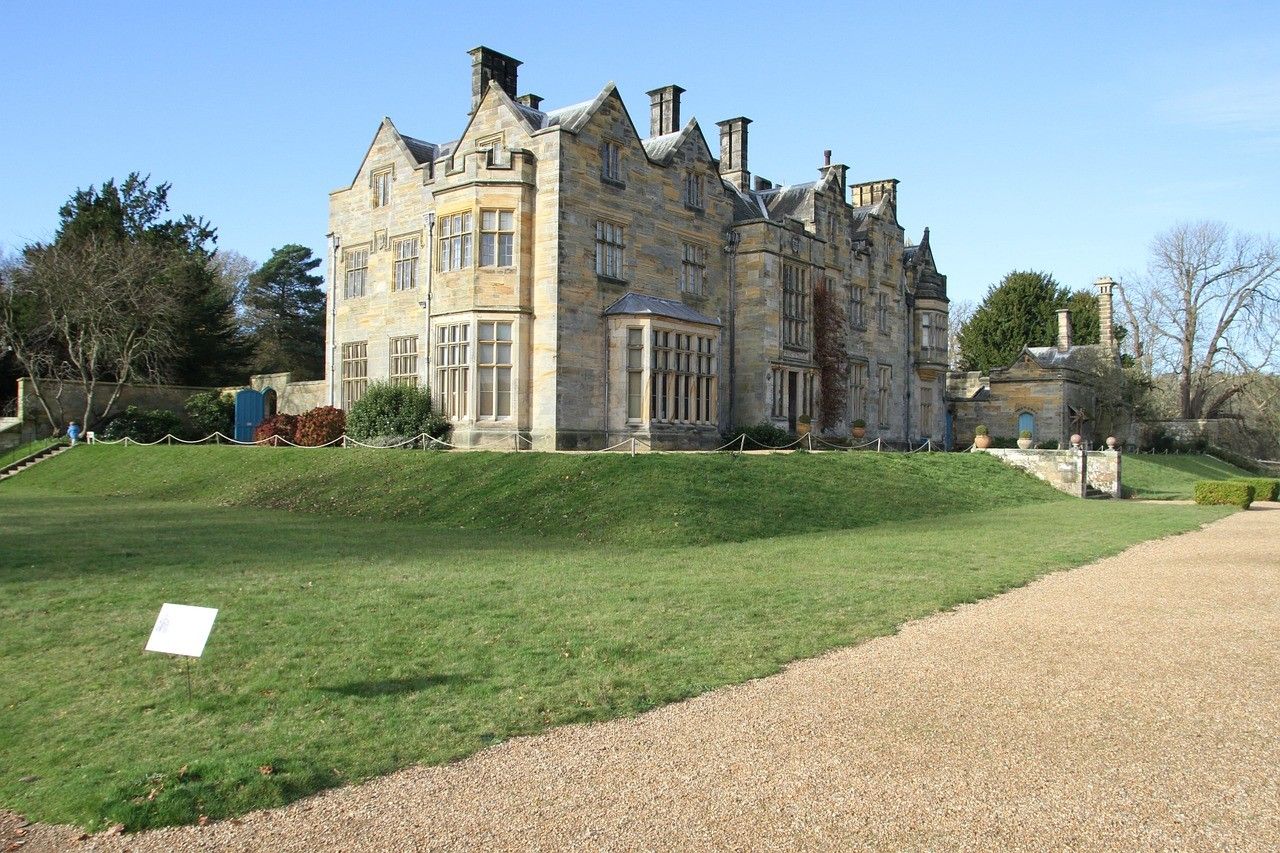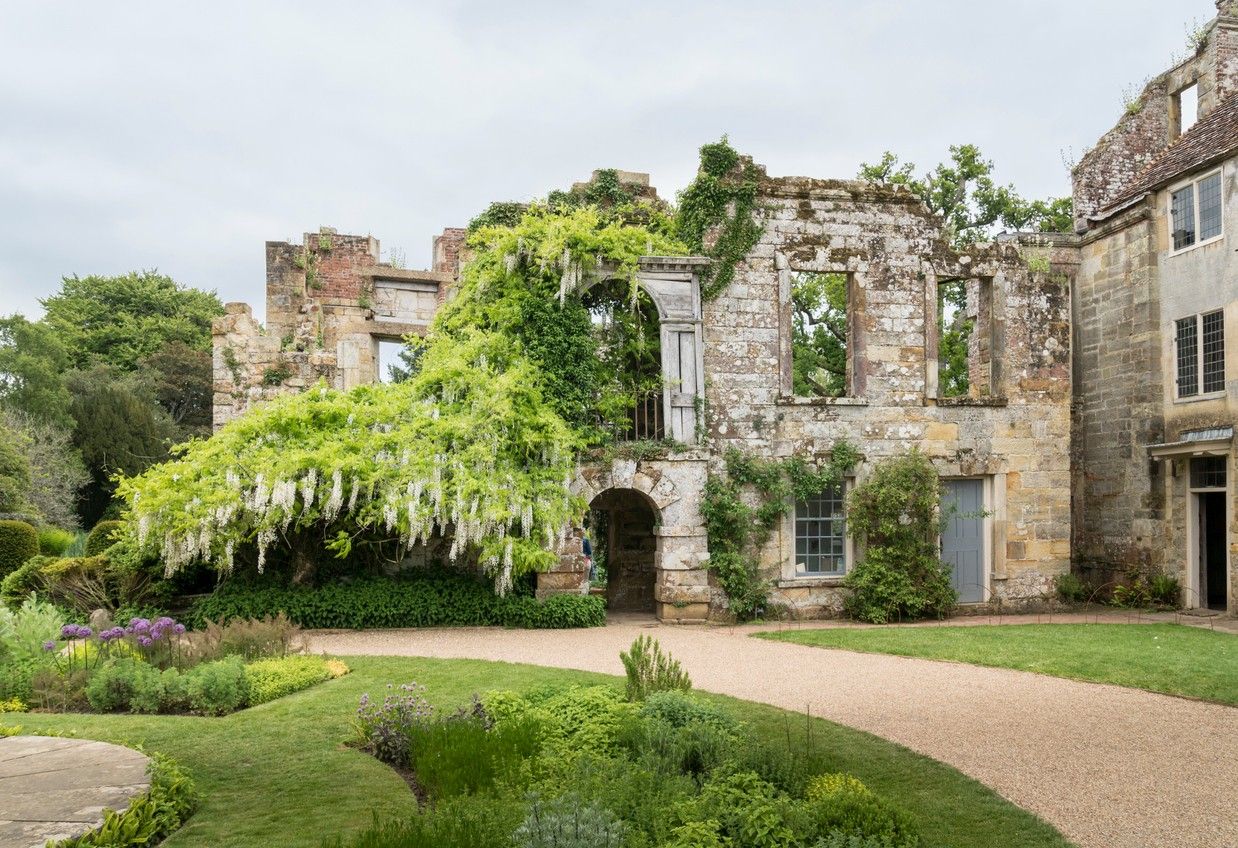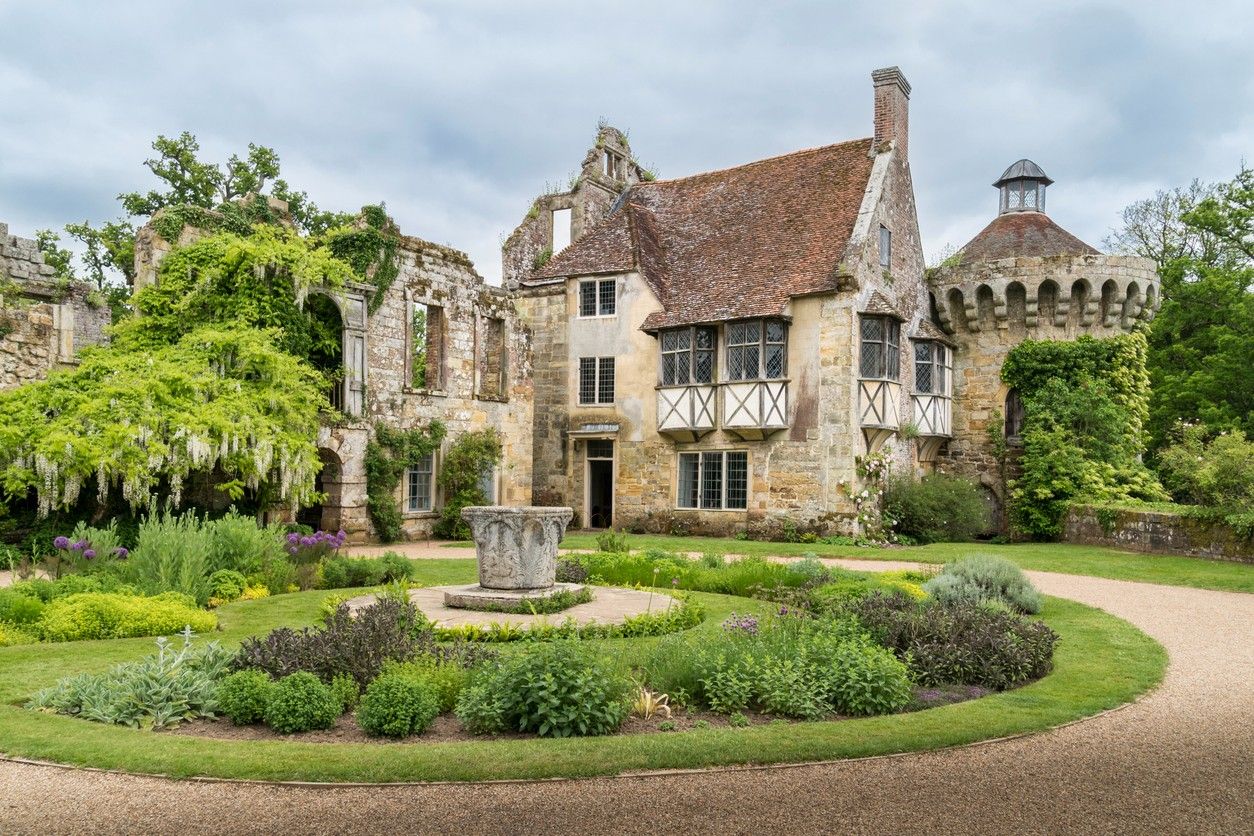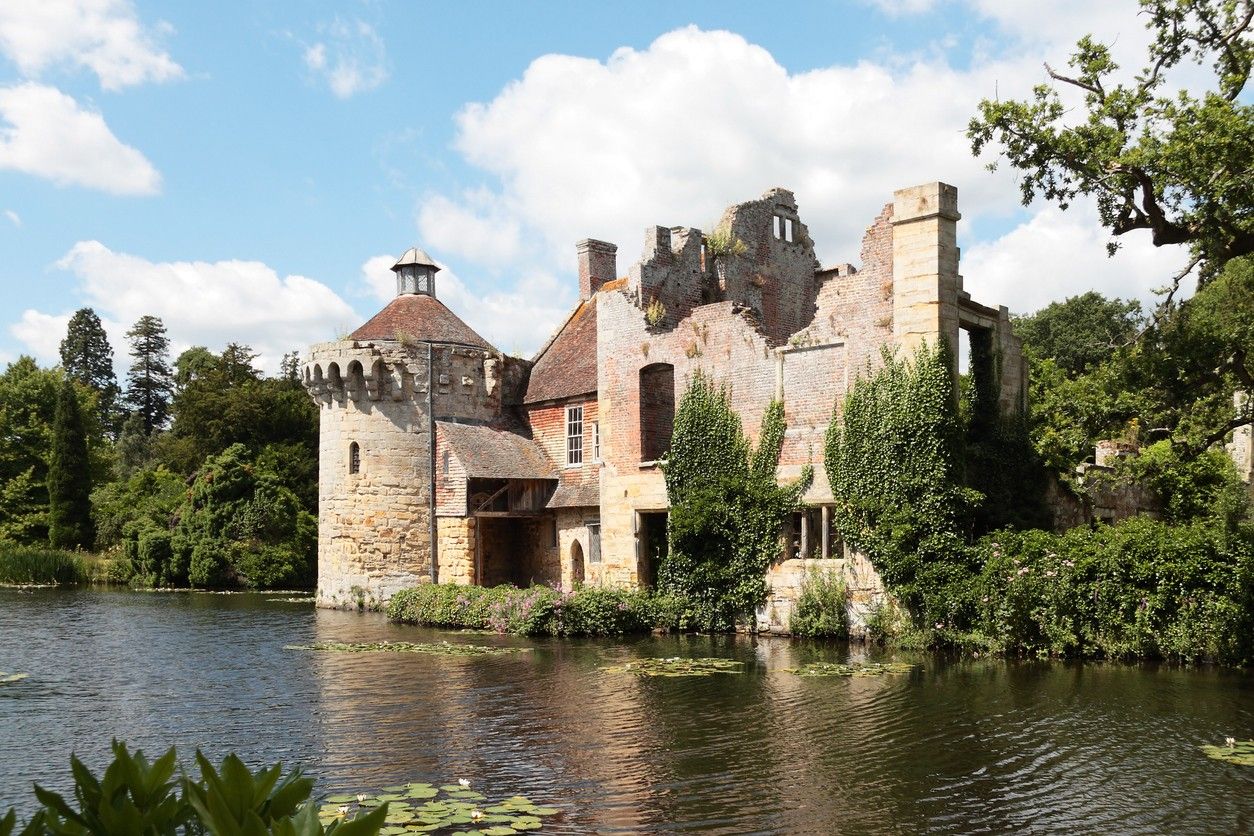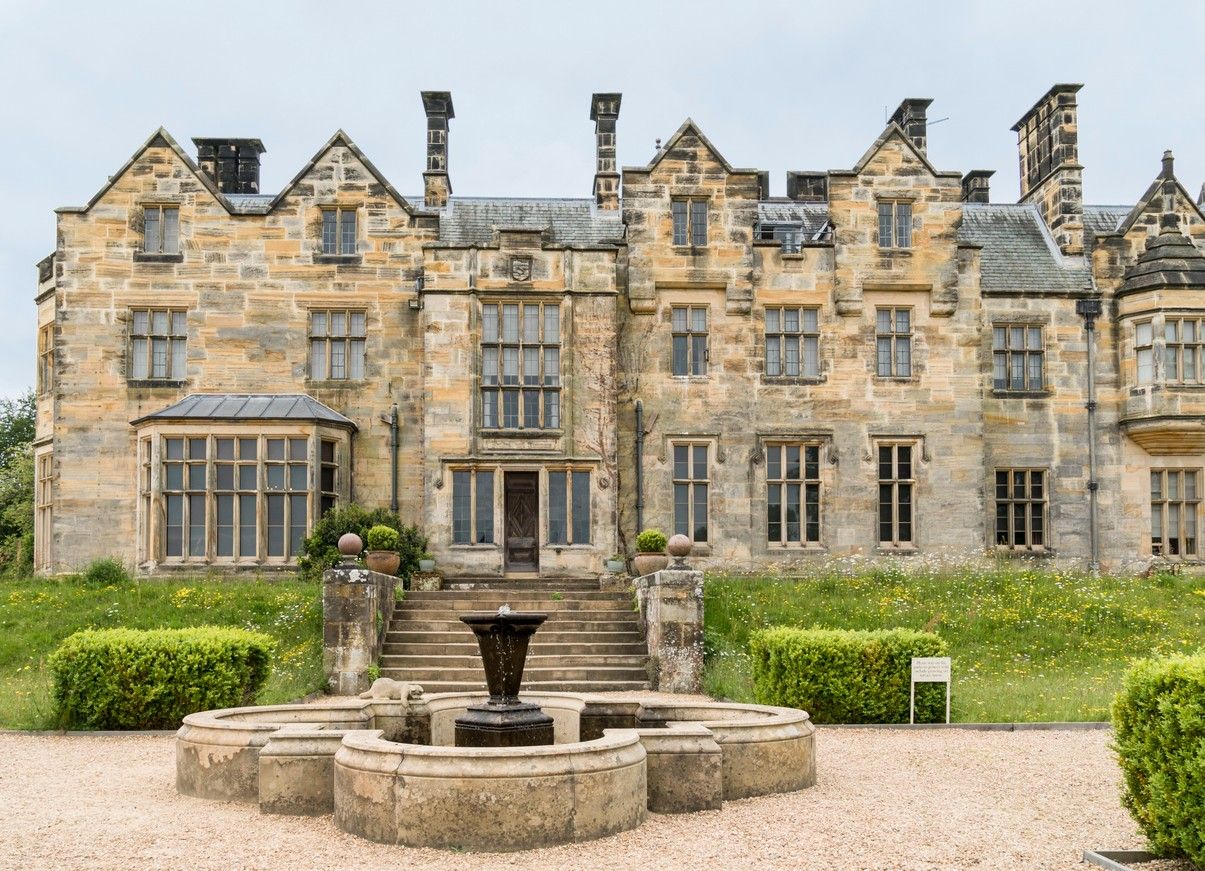History of Scotney Castle
Nestled amidst the lush, rolling hills of Kent, Scotney Castle stands as a testament to the architectural and historical brilliance of England. As a cherished property of the National Trust, this captivating castle and its surrounding gardens have captivated visitors for generations, offering a glimpse into the past while providing a tranquil escape from the modern world.
The Origins of Scotney Castle
The story of Scotney Castle can be traced back to the 14th century when the original medieval fortress was constructed on an island in the River Bewl. This strategic location, surrounded by water on all sides, provided the castle with a formidable defensive position, making it a crucial stronghold during a tumultuous period marked by political unrest and conflict. The earliest recorded mention of the castle dates back to 1378 when it was owned by the Darrell family, a prominent local dynasty who would go on to play a significant role in the castle's development over the centuries. The original Scotney Castle was a classic example of medieval military architecture, featuring thick stone walls, sturdy towers, and a moat that encircled the entire structure. As the centuries passed, the castle underwent numerous renovations and expansions, with each successive owner leaving their mark on the property's evolving design. From the addition of Tudor-style elements to the construction of ornate gatehouse entrances, the castle's appearance continued to transform, reflecting the changing tastes and needs of its inhabitants. Despite the numerous changes, the Darrell family's ownership of Scotney Castle remained relatively stable for over 300 years, with the property passing down through the generations. This long-standing connection to the land and its history allowed the family to cultivate a deep appreciation for the castle's heritage, ensuring its preservation and maintenance through the centuries.
The Transformation of Scotney Castle
The most significant transformation in Scotney Castle's history occurred in the 19th century when the property underwent a dramatic change in both appearance and function. During this time, the ageing Tudor-style castle, which had served as the family's primary residence for centuries, was abandoned in favour of a new, more comfortable and visually striking mansion built on a nearby hillside. The driving force behind this major renovation was Edward Hussey III, a wealthy landowner who sought to create a residence that better suited the romantic sensibilities of the era. Embracing the Gothic Revival architectural style that was popular at the time, Hussey commissioned the construction of a grand, neo-Gothic mansion, complete with towers, turrets, and ornate decorative elements. As the new Scotney Castle took shape, the original medieval fortress was left to slowly decay, a deliberate decision that would ultimately transform it into one of the property's most iconic features. By allowing the old castle to crumble into a picturesque ruin, Hussey and his architects were able to create a striking visual contrast between the romantic, gothic-inspired mansion and the haunting, ivy-covered remains of the past. This strategic blending of the old and the new, the ruined and the refined, reflected the broader Romantic movement that was sweeping through England during the 19th century. The Hussey family's embrace of this aesthetic sensibility not only shaped the physical appearance of Scotney Castle but also imbued the property with a sense of timeless, nostalgic charm that continues to captivate visitors to this day.
The Hussey Family Legacy
The Hussey family's association with Scotney Castle spanned an impressive 350 years, a testament to their deep-rooted connection to the property and their unwavering commitment to its preservation. Throughout the centuries, the Husseys played a pivotal role in shaping the castle's identity and ensuring that it remained a vibrant and well-maintained estate, even as the original medieval fortress fell into disrepair. As successive generations of the Hussey family took ownership of Scotney Castle, they each left their unique mark on the property, whether through architectural renovations, landscape design, or the careful curation of the estate's vast collection of historical artefacts and documents. This multi-generational stewardship allowed the Husseys to develop a deep understanding and appreciation for Scotney Castle's rich heritage, which they then sought to protect and share with the wider public.
The crowning achievement of the Hussey family's legacy came in 1970, when the last member of the dynasty, Elizabeth Hussey, bequeathed the entire Scotney Castle estate to the National Trust. This generous donation ensured that the property would be preserved and maintained in perpetuity, allowing future generations of visitors to experience the magic and splendour of this remarkable historical treasure. The Hussey family's devotion to Scotney Castle is further evidenced by the meticulous care and attention they dedicated to the estate's gardens and natural landscapes. From the romantic, picturesque Lower Garden to the formal elegance of the Upper Garden, the Husseys meticulously curated these outdoor spaces, creating a harmonious blend of manicured beauty and untamed natural wonder that continues to captivate all who visit. Through their unwavering stewardship and their eventual donation of the castle and its grounds to the National Trust, the Hussey family has ensured that Scotney Castle will remain a cherished part of England's cultural heritage for generations to come. Their legacy is woven into the very fabric of this magnificent property, a testament to the power of dedicated, multigenerational preservation.
Exploring the Enchanting Gardens of Scotney Castle
The Lower Garden — A Romantic Oasis
At the heart of the Scotney Castle estate lies the Lower Garden, a breathtaking landscape that exemplifies the romantic, picturesque style that was so popular during the 19th century. Designed to evoke a sense of timeless, idyllic beauty, this serene corner of the property features a tranquil lake, its still waters reflecting the surrounding foliage and the romantic ruins of the original medieval castle. Visitors to the Lower Garden are immediately struck by the sense of tranquillity and harmony that pervades the space. Winding paths meander along the lake's edge, allowing guests to fully immerse themselves in the natural beauty of the setting. Lush, verdant plantings of towering trees, vibrant flowers, and cascading vines create a lush, almost dreamlike atmosphere, transporting visitors to a bygone era.
One of the most captivating features of the Lower Garden is the presence of the lake, which serves as the centrepiece of this romantic landscape. Home to a variety of aquatic life, including graceful swans and other waterfowl, the lake's serene surface provides a mirror-like reflection of the surrounding foliage and historic castle ruins. This interplay of water, greenery, and architectural elements creates a truly enchanting visual experience, capturing the essence of the Romantic movement's celebration of the picturesque. The Hussey family, who were responsible for the Lower Garden's design and maintenance, took great care to ensure that this area of the Scotney Castle estate remained a harmonious and visually striking oasis. Through their meticulous attention to detail and their commitment to preserving the natural beauty of the site, they have left an indelible mark on the property, ensuring that the Lower Garden continues to captivate and delight visitors to this day.
The Upper Garden — Formal Elegance
In contrast to the romantic, naturalistic beauty of the Lower Garden, the Upper Garden at Scotney Castle presents a more formal and structured landscape, reflecting the refined sensibilities of the 19th-century aristocratic class. Situated on the hillside above the Lower Garden, this meticulously manicured space features a series of terraced gardens that offer sweeping views of the surrounding countryside. The Upper Garden is characterised by its symmetrical design, with neatly trimmed hedges, perfectly aligned flowerbeds, and a sense of architectural grandeur that sets it apart from the more meandering, organic spaces below. This formal aesthetic was a hallmark of the Hussey family's approach to landscape design, as they sought to create a sense of order and refined elegance that complemented the gothic-inspired architecture of the new Scotney Castle mansion.
Despite its more structured layout, the Upper Garden is no less visually captivating than its romantic counterpart. Vibrant blooms of roses, rhododendrons, and other carefully curated plant life burst forth in an array of colours, creating a breathtaking display that changes with the seasons. Visitors can wander along the terraced pathways, taking in the panoramic vistas of the surrounding hills and valleys, or pause to admire the intricate masonry and architectural details that adorn the garden's various structures. The Hussey family's commitment to maintaining the Upper Garden's pristine appearance is evident in the meticulous care and attention lavished upon this area of the Scotney Castle estate. Gardeners and groundskeepers work tirelessly to ensure that every hedge is perfectly trimmed, every flower bed immaculately presented, and every vista unobstructed, preserving the sense of formal elegance that has defined this space for generations.
The Woodland Walks
Encompassing the castle and its formal gardens are a series of enchanting woodland walks that invite visitors to immerse themselves in the natural beauty and biodiversity of the Scotney Castle estate. These meandering paths wind through towering trees, past babbling brooks, and alongside the romantic ruins of the original medieval castle, offering a serene and rejuvenating experience for nature enthusiasts and outdoor adventurers alike. One of the Woodland Walks' most captivating features is the opportunity to observe the diverse array of flora and fauna that call this corner of the Scotney Castle estate home. From the vibrant wildflowers that carpet the forest floor to the elusive dormice and other small mammals that scurry among the undergrowth, the property's natural habitats teem with life, offering endless opportunities for birdwatchers, botanists, and nature enthusiasts to explore and discover. The Hussey family's commitment to preserving the Woodland Walks' natural beauty and ecological integrity is evident in the National Trust's ongoing conservation efforts within the estate. Through targeted management practices, such as selective tree thinning and the promotion of native plant species, the Trust ensures that these vital habitats remain healthy and thriving, safeguarding the delicate balance of the Scotney Castle ecosystem for generations to come.
The Scotney Castle Estate — More Than Just a Castle
Historic Outbuildings — Glimpses into the Past
Scattered throughout the Scotney Castle estate are a variety of historic outbuildings that offer visitors a unique glimpse into the daily operations and workings of this remarkable property. These structures, which range from a charming Victorian-era service courtyard to a well-preserved oast house used for drying hops, provide invaluable insights into the lives and activities of the individuals who once called Scotney Castle home. One of the most captivating of these outbuildings is the service courtyard, a neatly arranged collection of buildings that once housed the various tradespeople and staff responsible for maintaining the Hussey family's grand estate. Here, visitors can explore the former carriage house, stables, and other service buildings, imagining the bustling activity that would have taken place as the estate's residents and workers went about their daily tasks. Another fascinating example of Scotney Castle's historic outbuildings is the oast house, a distinctive structure designed specifically for the drying and processing of hops – a crucial ingredient in the production of beer. This well-preserved building, with its iconic conical roofs, serves as a tangible reminder of the property's agricultural heritage and the vital role it played in the local economy. In addition to these larger structures, the Scotney Castle estate also features a series of charming estate cottages that once housed the castle's staff, from groundskeepers and gardeners to cooks and housemaids. Visitors can explore the interiors of these cottages, marvelling at the modest yet functional living spaces that would have provided shelter and accommodation for the individuals responsible for the day-to-day operations of the estate.
Natural Habitats and Conservation Efforts
Scotney Castle's expansive grounds are home to a diverse array of natural habitats, each teeming with a rich tapestry of flora and fauna that contribute to the estate's ecological diversity and overall beauty. From ancient woodlands to wildflower meadows and wetland areas, the property's natural landscapes offer visitors a unique opportunity to immerse themselves in the tranquillity and splendour of the English countryside. The National Trust, which has owned and managed Scotney Castle since 1970, has made a concerted effort to preserve and protect these vital natural habitats, ensuring that the estate's rich biodiversity is maintained for future generations. Through targeted conservation initiatives, the Trust's dedicated team of ecologists and land managers work tirelessly to monitor and manage the property's natural resources, promoting the growth and flourishing of indigenous plant and animal species. One of the crown jewels of Scotney Castle's natural landscapes is its ancient woodlands, which provide a home to a diverse array of tree species, including majestic oaks, towering beeches, and the elusive dormouse. These woodlands not only offer a serene and rejuvenating environment for visitors to explore but also play a crucial role in supporting the overall health and resilience of the estate's ecosystems.
In addition to the woodlands, the Scotney Castle estate is home to a variety of other natural habitats, each with its unique character and inhabitants. Wildflower meadows burst forth with a vibrant tapestry of colours during the spring and summer months, attracting a wide range of pollinators, including bees, butterflies, and hummingbird moths. Meandering streams and wetland areas, meanwhile, provide a haven for aquatic life, from graceful waterfowl to the secretive water vole. Through their commitment to preserving and enhancing these natural spaces, the National Trust and the Scotney Castle estate have established themselves as champions of biodiversity and environmental stewardship. Visitors who explore the property's walking trails and observation areas are not only treated to breathtaking scenery but also gain a deeper appreciation for the delicate balance of the natural world and the importance of protecting these precious habitats.
Planning Your Visit to Scotney Castle
Scotney Castle Tickets and Admission — Scotney Castle is operated by the National Trust, and admission to the castle, gardens, and estate is subject to ticket purchase. Visitors can purchase tickets online in advance or on-site, with discounts available for National Trust members and children. It's important to note that ticket prices may vary depending on the time of year and any special events taking place during your visit.
Visiting Hours and Seasonal Variations — Scotney Castle is open to the public throughout the year, but hours and access to certain areas may vary by season. During the peak summer months, the castle and gardens are typically open from 10:00 am to 5:00 pm, while winter hours may be reduced. It's advisable to check the National Trust website for the most up-to-date information on opening times and any potential closures or special events.
Accessibility and Mobility — The Scotney Castle estate is designed to be as accessible as possible, with paved paths, gentle slopes, and designated disabled parking areas. However, visitors with mobility challenges should be aware that the castle itself has limited accessibility, as it features many stairs and uneven surfaces. The National Trust website provides detailed accessibility information, and the staff at Scotney Castle are always happy to assist visitors with special needs.
Dining and Refreshments — Hungry visitors to Scotney Castle will find a range of dining options on-site. The Scotney Castle Café offers a selection of light snacks, hot meals, and beverages made with locally sourced ingredients. Picnic spots are also available throughout the estate, allowing visitors to enjoy their packed lunches while taking in the stunning surroundings.
Related Articles

Let us know you agree to cookies
We use marketing, analytical and functional cookies as well as similar technologies to give you the best experience. Third parties, including social media platforms, often place tracking cookies on our site to show you personalised adverts outside of our website.
We store your cookie preferences for two years and you can edit your preferences via ‘manage cookies’ or through the cookie policy at the bottom of every page. For more information, please see our cookie policy.

